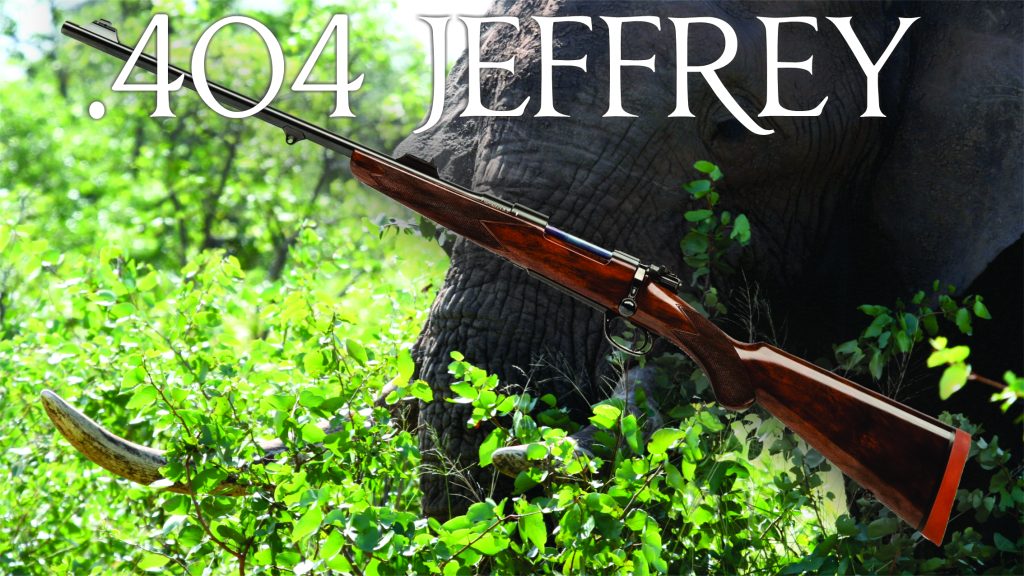Calibre Description and Specifications
The .404 Jeffery is a large calibre rimless bottleneck cartridge that was originally designed with the dangerous game of Africa and India in mind. This cartridge has also been called the .404 Jeffery Rimless, .404 Rimless Nitro Express, and in Germany, as the 10.75× 73mm. The dimensions of the cartridge are shown in Figure 1. The maximum overall length of the cartridge is 3.350”.
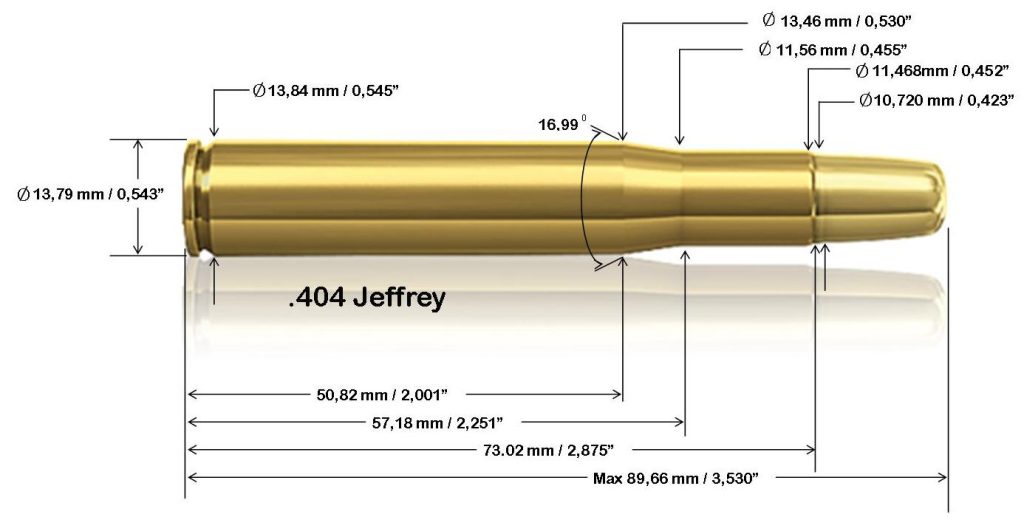
The case uses a large rifle magnum primer and has a relative capacity of 113 grains of water (7.3 ml). When fired the cartridge generates a maximum pressure (C.I.P) of 52 938 pounds per square inch (364.99 MPa). The case rim thickness is 0.05” (1. 3 mm).
The .404 Jeffery is shown alongside a .505 Jeffery and .375 Holland and Holland in Figure 2 for comparison.

History
The cartridge was designed by the great British gunmaking company W.J. Jeffery & Co of England. They wanted to duplicate the performance of the .450/400 (3 ¼ “) cartridge.
Prior to 1912, W.J. Jeffery built .404 Rimless Nitro Express rifles on ex-military, standard length, 98 Mauser actions produced by Mauser Werke Obendorf that had the action and magazine box modified to fit (Figure 5).
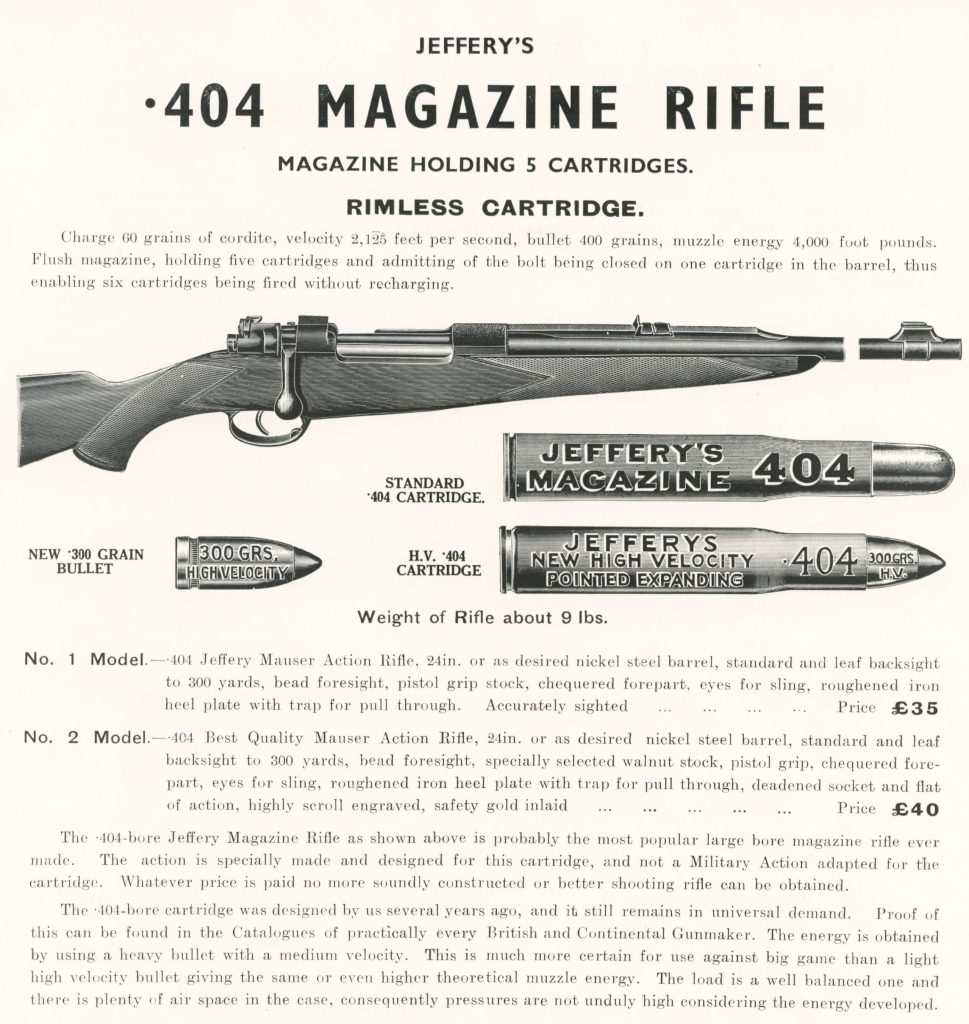
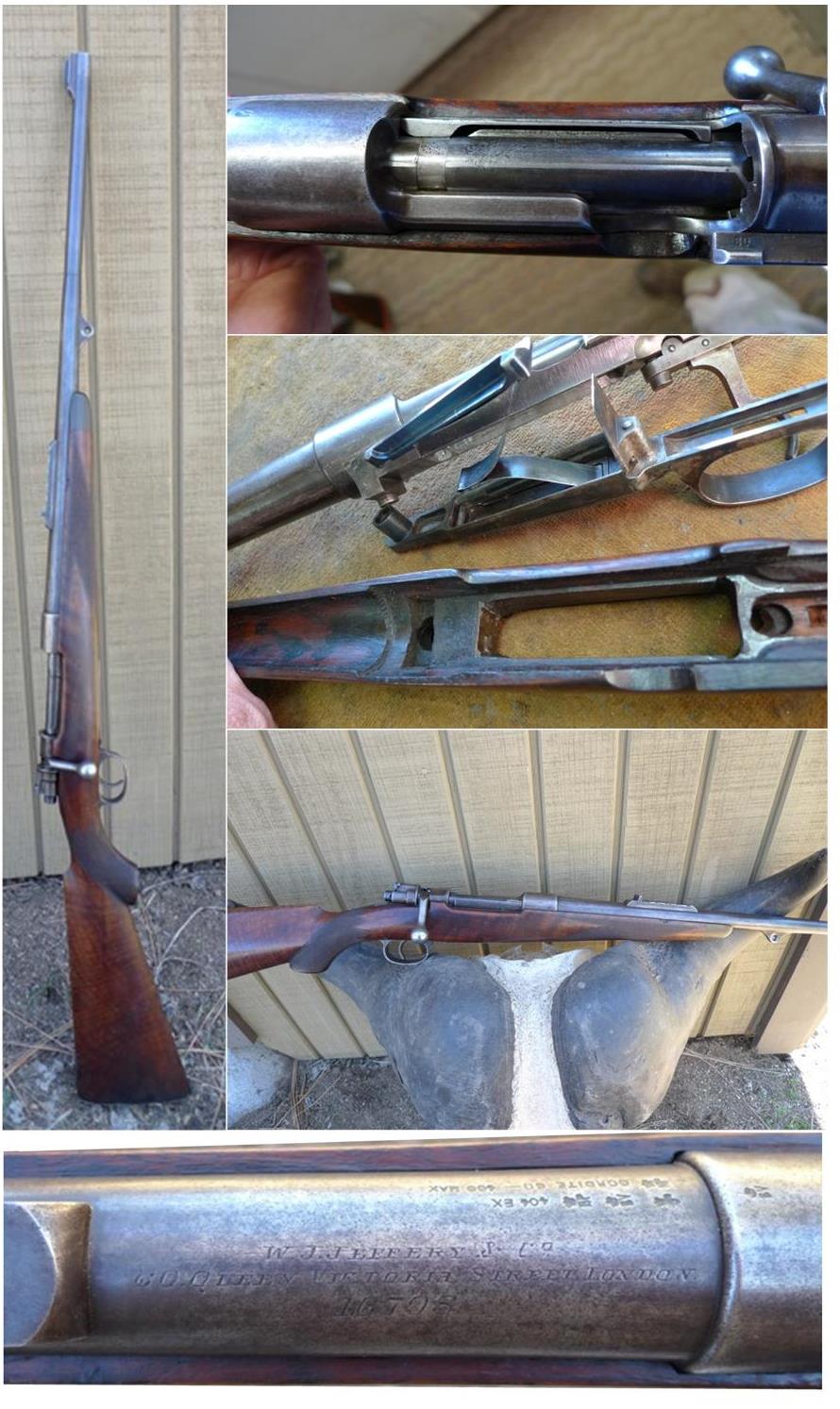
Figure 4: A .404 Jeffery produced by the Jeffery company in 1905 (Serial no.) – still in excellent condition
It must be remembered that John Rigby & Co. had the exclusive distributorship for the U.K. market of Mauser rifles and components manufactured by the Mauser firm, from 1898 to 1912. When Rigby’s exclusive distributorship ended, Jeffery began using 98 Magnum Mauser actions to produce .404 Rimless NE rifles (Figure 5). Vickers also made up a number of guns on 98 Mauser actions that were used by the Elephant Control Department of Tanganyika. Cogswell & Harrison (Figure 6), Waffenfabrik Mauser and a host of other gunmakers built .404 Rimless NE rifles.
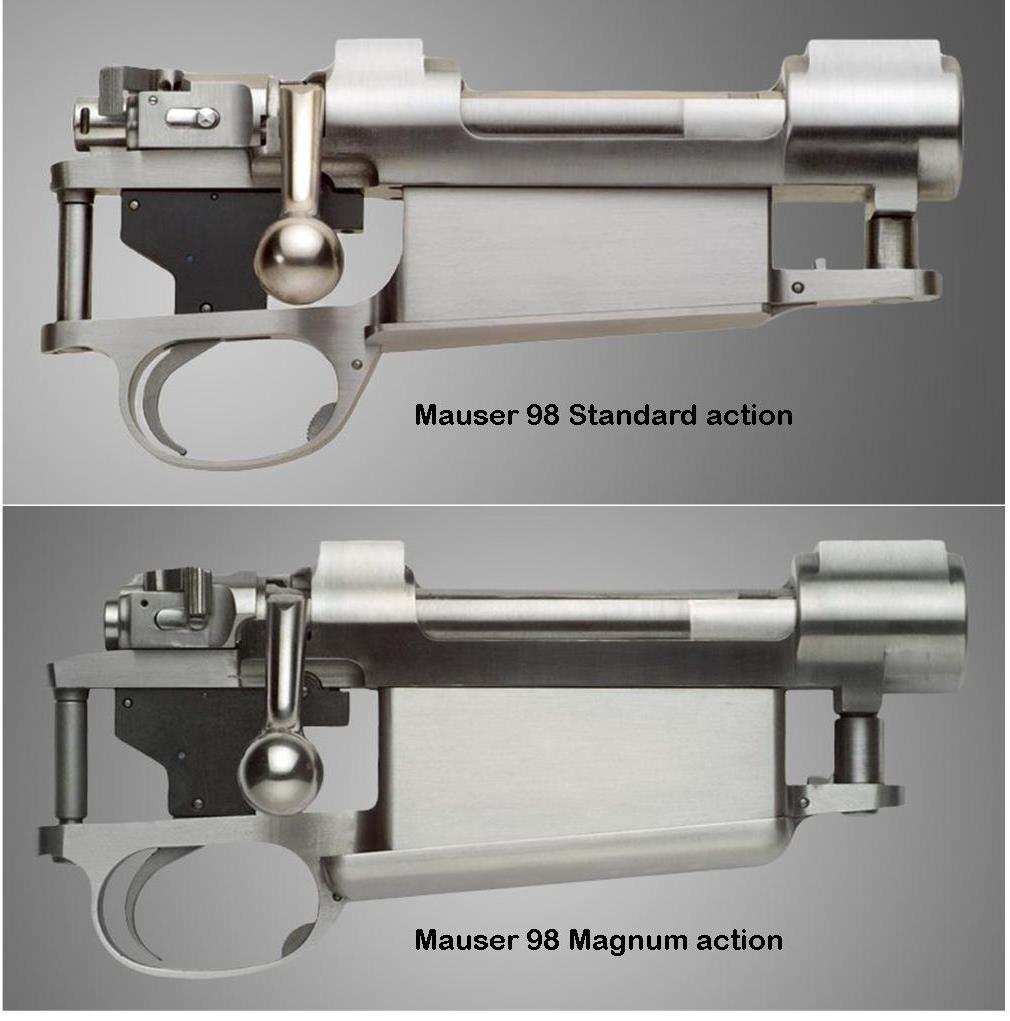
Figure 5: Prior to 1912 Jeffery built their .404 rifles on modified Standard Mauser 98 actions. After 1912 they used Magnum Mauser 98 actions to build their .404 rifles.

In its highest grade, Jeffery offered the model 1905 chambered for the .404 cartridge at £25 pounds sterling!
The original .404 Jeffery cartridge fired a .423″ diameter bullet of either 300 grain with a muzzle velocity of 2,600 ft/s and muzzle energy of 4 500 foot-pounds or a 400 grain bullet with a muzzle velocity of 2,125 ft/s and 4 020 foot-pounds of energy.
The lighter bullet was intended to be used on thin-skinned game at long range and although the idea may have been a good one, the results of its use in the field usually left much to be desired.
John “Pondoro” Taylor remarked in his book African Rifles and Cartridges that the 300 grain bullet was unreliable on dangerous game and advised hunters to use it only on thin-skinned, non-dangerous game. His main complaint was the poor construction of the copper-pointed bullets loaded by Jeffery which did not hold up well for use in Africa on dangerous species. Jeffery, it must be said, designed the 300 grain copper-pointed bullet for long-range shooting in India and did not intend for it to be used on dangerous African game. Today Woodleigh, Hornady and, Barnes produce excellent 400 and 450 grain bullets for this calibre.
The .404 Jeffery 400 grain bullet gained an excellent reputation when used on thick skinned dangerous animals in Africa and it became the calibre of choice adopted for standard issue in the game departments of Uganda, Kenya, Tanganyika, Northern and Southern Rhodesia, and Nyasaland.
The rimless case feeds smoothly in bolt action rifles and the recoil is not as heavy as the more powerful .416 Rigby, .458 Lott and .505 Gibbs making .404 Jeffery rifles easier to shoot accurately. The guns are often much lighter than the big double rifles employed in Africa and ammunition is significantly cheaper.
It is ironic that the .416 Rigby became more famous than the .404 Jeffery as the latter used and preferred by many African hunters and game wardens was the “workhorse” of Africa. The .416 probably became more well-known because of Robert Ruark writing extensively about Harry Selby’s .416.
It would seem logical to assume that the .404 Jeffery fires a bullet that measures .404”. In fact it uses a bullet of .423” diameter. Where the .404 designation came to be used is unclear. Kynoch was once one of the biggest manufacturers of .404 Jeffery ammo and, for many years, wherever the Empire’s flag flew, it was almost certain that a hunter could find ammo chambered in this caliber .
All that changed with the end of the British Empire and the decision made by Kynoch in the 1960’s to stop producing ammunition. Although RWS continued making ammunition, this singular event marked the long, slow decline of the .404 Jeffery into virtual obscurity. The introduction of the .458 Winchester Magnum at about the same time only hastened its demise from the game fields of Africa and India
A sudden revival of interest in African hunting came about in the late 1980’s and early 1990’s which created a demand for dangerous game rifles. Many of the old rifles made by British and Continental gunmakers were avidly sought after by hunters along with the ammunition for them. This brought about a “renaissance” of some of the “older” cartridges including the .404 Jeffery and it has never looked back. The Australian company of Bertam started producing brass for this calibre and Woodleigh began turning out bullets for the .404.
The .404 Jeffery has manageable recoil and is more pleasant to shoot when compared to other bigger cartridges. Because there is less inclination to flinch accurate shooting
Ballistics
Typical ballistics for the .404 Jeffrey from the original version to the German 10.75 x 73 mm version is shown in Table 3 below (also see Table 1).
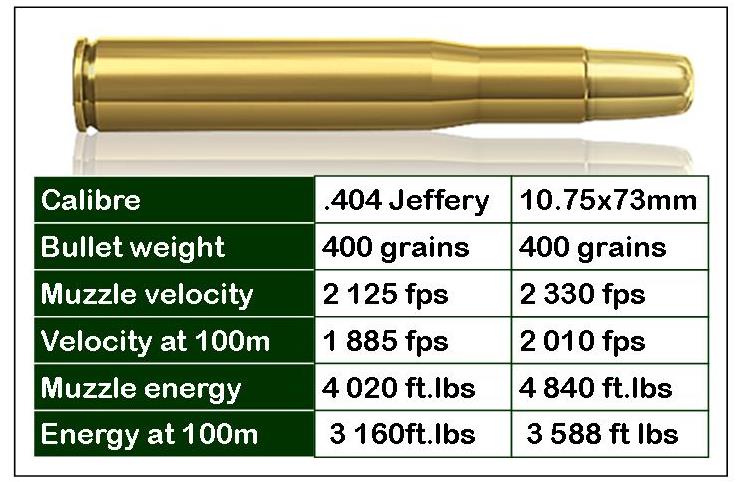
Recommended for Species
The .404 Jeffery – especially beefed up with modern smokeless powders and achieving muzzle energies of up to 4800 foot pounds – is more than adequate for Africa’s dangerous game species and with its lower recoil and smooth cartridge feeding is a pleasure to shoot.
Famous Hunters Who Used This Calibre
The biggest enthusiast of the .404 Jeffery among the famous old ivory hunters was “Mickey” Norton who dispatched around 2000 elephant during his long career and is described in the book “Elephant Hunters – Men of Legend” by Tony Sanches Arino who himself, although he did not own a .404, had occasion to hunt elephant and buffalo a number of times with a borrowed .404 Jeffery and he found the calibre to be “entirely satisfactory” on these big African animals (Figure 7). In the former Spanish Guinea (Equatorial Guinea), a local hunter who went by the name of Angel Ela, killed many elephants with a Belgian made .404 Jeffery. This calibre was the standard issue in many African game departments where it performed admirably.
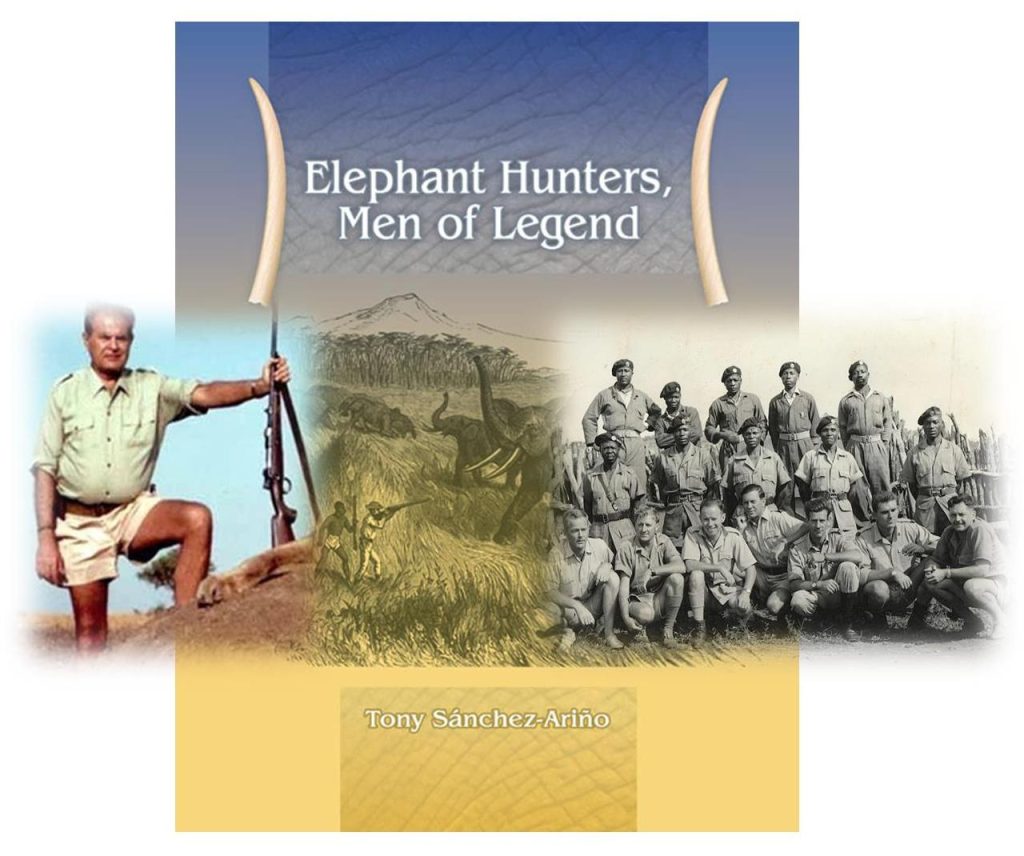
Manufacturers Of .404 Rifles
Today there are a number of companies that still produce .404 Jeffery rifles in limited quantities including CZ, Heym, and Dorleac (Figure 8). It is also a favourite for custom gunmaking projects built around Magnum Mauser 98 actions.
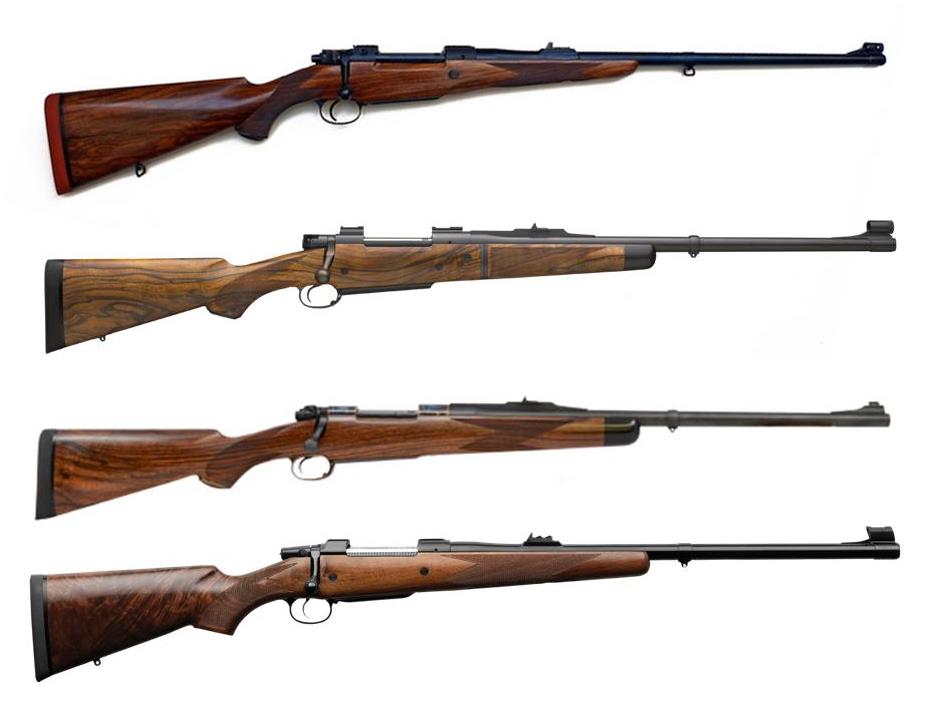
Handloading The .404 Jeffrey
Fortunately there are modern components available for handloading the .404 Jeffrey. Barnes, Hornady, North Fork and Woodleigh have a selection of bullets available in .423” diameter for this calibre (Figure 9). The excellent North Fork bullets have .423” bullets available in Premium Bonded Core, Percussion Point and Premium Flat/Cup point design available in 380, 400 and 430 grains (Figure 10).
Hornady, Norma and the Australian company Bertram produce cases for the .404.
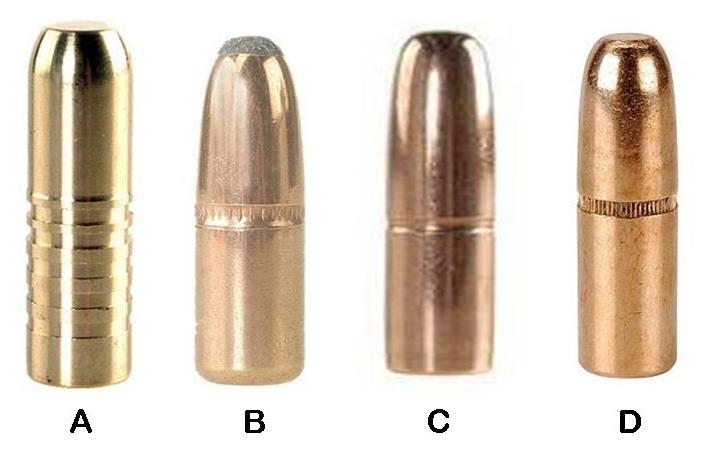
- Barnes 400 grain banded solid
- Woodleigh 350grain RN SN
- Woodleigh 400 grain RN SN
- Woodleigh 400 grain FMJ
- Woodleigh 450 grain RNSN
- Woodleigh 450 grain FMJ
- Hornady 400 grain DGS
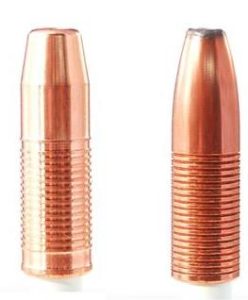

The Present and the Future
Ammunition for the .404 Jeffery is available from Hornady, Kynoch, Swift and Norma (see Table 3 and Figure 11). Norma’s ammunition is loaded quite a bit hotter than the original specs call for and is almost as powerful as the .416 Rigby. The older loads, with the 400 grain bullets at 2,150 fps, still make a fantastic choice for the recoil-sensitive hunter that enjoys the thrill of dangerous game without the punishment associated with some of the bigger and faster cartridges, and as history has proven, this formula works.
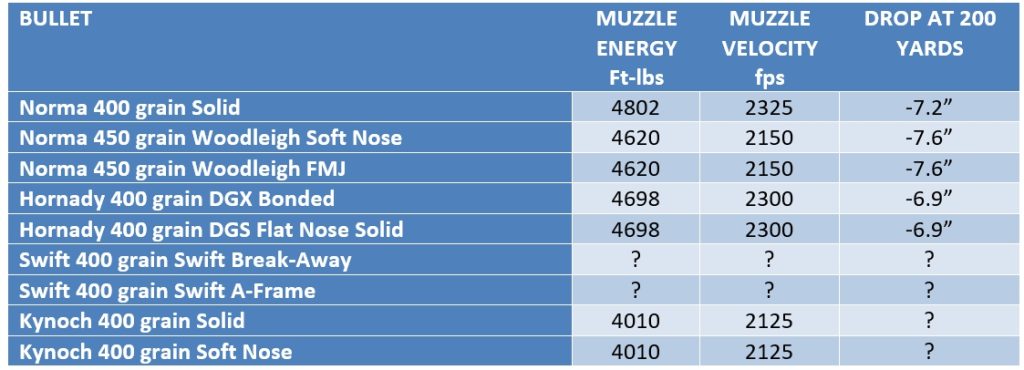
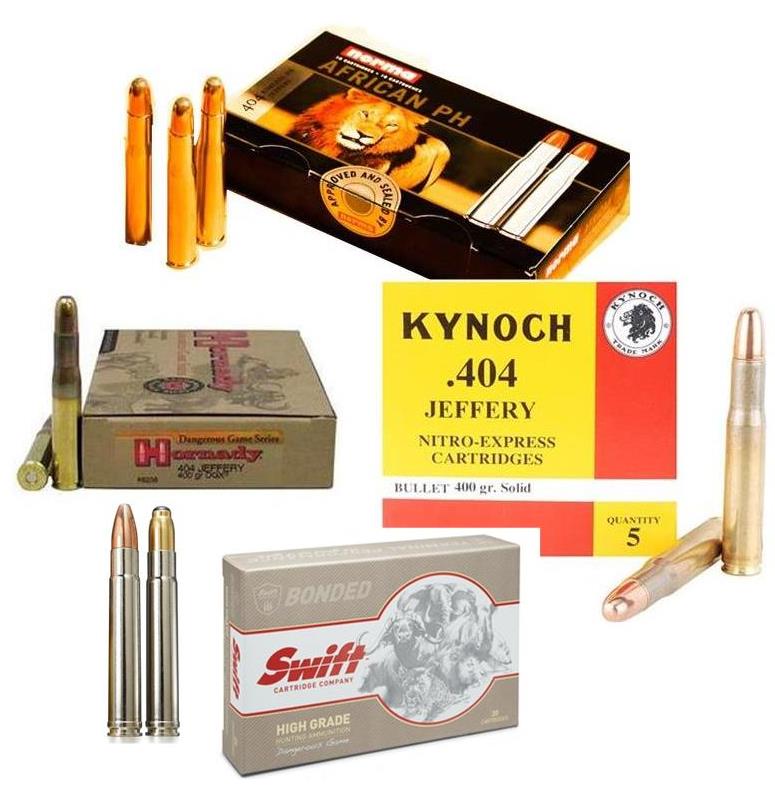
This grand old cartridge which never received the credit it was due and made hunting history has returned from near extinction and is set to be around for a long time to come.
References
- Bussard, M. (2011): Ammo Encyclopedia 3rd Ed. Ingrid Book Company and Baker and Taylor.
- Forker, B. (2006): Ammo & Ballistics 3rd Ed. Safari Press.
- Sanchez-Arino, T (2013): Great African Calibers. Safari Press.
- Somchem (2012): Reloading Powders. Ballistic Data Manual.

